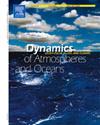Application of Weibull distribution and stable energy concept for numerical solutions of random wave heights
IF 2
4区 地球科学
Q2 GEOCHEMISTRY & GEOPHYSICS
引用次数: 0
Abstract
This study focuses on developing a new energy dissipation model and a corresponding solution for random wave height transformation based on stable energy theory and the Weibull distribution. Eight previously established breaking wave height formulas will be evaluated for compatibility with the new numerical solution in predicting wave height. A range of evaluation criteria (e.g., relative root-mean-square error (RRMSE), root-mean-square error (RMSE), mean absolute error (MAE), and standard deviation (ν)) will be applied to verify the reliability of the developed energy dissipation model alongside 13 existing models, using a large dataset of up to 6007 data points collected from 11 historical experiments. The results indicate that the NK1 solution for wave height transformation derived from the new energy dissipation model DB1 performs best in wave height prediction, with optimal shape and scale parameters of 1.53 and 0.83, respectively. The use of the DB1 model (or, equivalently, the NK1 solution) reduces errors compared to the 13 existing models by 8.1–69.4 % for RRMSE. For other evaluation criteria, DB1 also consistently outperforms the existing models. The findings further suggest that the stable energy concept is a feasible approach despite receiving limited attention from researchers. Additionally, the Weibull distribution is recommended for developing energy dissipation models or solutions for irregular wave height transformation. Therefore, the newly developed DB1 model and corresponding NK1 solution are strongly recommended for calculating random wave height transformation.
威布尔分布和稳定能量概念在随机波高数值解中的应用
本文的研究重点是基于稳定能量理论和威布尔分布建立一种新的随机波高变换能量耗散模型和求解方法。将评估先前建立的八个破浪高公式在预测波浪高度方面与新数值解的相容性。利用11个历史实验中收集的多达6007个数点的大型数据集,采用一系列评价标准(如相对均方根误差(RRMSE)、均方根误差(RMSE)、平均绝对误差(MAE)和标准差(ν))来验证所建立的能量耗散模型和13个现有模型的可靠性。结果表明,基于新能量耗散模型DB1的波高变换NK1解在波高预测中效果最好,最优形状参数为1.53,最优尺度参数为0.83。对于RRMSE,与13个现有模型相比,DB1模型(或同等的NK1解决方案)的使用减少了8.1-69.4 %的误差。对于其他评估标准,DB1也始终优于现有模型。研究结果进一步表明,尽管研究人员的关注有限,但稳定能量概念是一种可行的方法。此外,对于不规则波高变换,建议采用威布尔分布建立能量耗散模型或解决方案。因此,在计算随机波高变换时,强烈推荐使用新开发的DB1模型和相应的NK1解。
本文章由计算机程序翻译,如有差异,请以英文原文为准。
求助全文
约1分钟内获得全文
求助全文
来源期刊

Dynamics of Atmospheres and Oceans
地学-地球化学与地球物理
CiteScore
3.10
自引率
5.90%
发文量
43
审稿时长
>12 weeks
期刊介绍:
Dynamics of Atmospheres and Oceans is an international journal for research related to the dynamical and physical processes governing atmospheres, oceans and climate.
Authors are invited to submit articles, short contributions or scholarly reviews in the following areas:
•Dynamic meteorology
•Physical oceanography
•Geophysical fluid dynamics
•Climate variability and climate change
•Atmosphere-ocean-biosphere-cryosphere interactions
•Prediction and predictability
•Scale interactions
Papers of theoretical, computational, experimental and observational investigations are invited, particularly those that explore the fundamental nature - or bring together the interdisciplinary and multidisciplinary aspects - of dynamical and physical processes at all scales. Papers that explore air-sea interactions and the coupling between atmospheres, oceans, and other components of the climate system are particularly welcome.
 求助内容:
求助内容: 应助结果提醒方式:
应助结果提醒方式:


